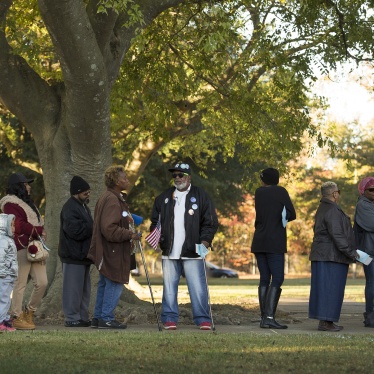As evidence of Iraq's supposed weapons of mass destruction and pre-war ties to terrorism remains elusive, Washington and London increasingly point to the overthrow of Saddam Hussein's brutal government to justify the invasion. At least people have been freed from one of the world's most ruthless tyrants, they note. This humanitarian intervention argument was only occasionally mentioned before the war and was clearly not a dominant motivation for the invasion. Now that it has emerged as perhaps the strongest remaining justification, it is worth examining seriously.
These include, foremost, that mass slaughter is ongoing or imminent, because only dire cases of large-scale carnage can justify war's deliberate taking of life. In addition, military action must be the last reasonable option; it must be guided primarily by a humanitarian motive; it must be reasonably likely to do more good than harm; it ideally, though not necessarily, should be endorsed by the UN Security Council or another significant multilateral authority; and it should be conducted in a way that maximises compliance with international humanitarian law.
Avoiding Harm
There are serious questions about whether the Iraq war met any of these criteria, but this essay looks only at the latter one. When considering compliance with international humanitarian law or the law of armed conflict, the key question is, did coalition forces take all feasible precautions during the March-April war to avoid civilian casualties?
Most people with a superficial understanding of how the war was fought would answer this question with a resounding 'yes!' Our image of the American and British military at war is largely formed by videos of bombs or missiles hitting home with amazing precision. These pictures demonstrate an ability to launch attacks on fixed, pre-selected targets with remarkable accuracy.
That precision is only part of the story. As required by the law of armed conflict, military planners also took various steps to minimise harm to civilians. They typically selected the time of day for attack when the fewest civilians were expected to be present, the angle of attack from which a miss was least likely to harm non-combatants, and the type of bomb or missile that was least likely to spread shrapnel or debris. Mistakes still happened, but these efforts to avoid harm were impressive.
Unfortunately, coalition forces were less successful at avoiding civilian harm when attacking targets that arose unexpectedly in the course of war, as Human Rights Watch found in an extensive post-war field investigation of battlefield damage.
The problem was not simply the reduced time to prepare, or the greater difficulty of hitting a moving target. Rather, coalition forces launched two types of operations - cluster-munition attacks in populated areas and assaults on Iraqi leaders using dangerously imprecise methods to locate them - that violated the requirement of international humanitarian law to take all feasible precautions to avoid civilian harm.
Iraqi troops also violated the law - often and blatantly. They used civilians as human shields, routinely stored military equipment in civilian areas, abused the Red Cross or Red Crescent symbols, and deployed antipersonnel landmines - all with a toll on non-combatants. Yet one side's violation of international humanitarian law does not absolve the other of its duty to comply. Regardless of Saddam's abysmal record, coalition troops were legally required to take all feasible precautions to avoid civilian casualties. Their failure to do so in these two important respects needlessly killed civilians.
Scattershot
The most fatal shortcoming was the use of cluster munitions in populated areas. These weapons open above ground, releasing dozens and sometimes hundreds of sub-munitions over a wide area. Each is capable of killing or severely injuring anyone in the vicinity. When used in populated areas, the scattershot nature of such weapons makes them extraordinarily dangerous for civilians. The danger continues long after the conflict because many sub-munitions do not explode on initial contact and become de facto landmines.
Human Rights Watch's battlefield investigation following the 1999 war in Yugoslavia highlighted the danger. We found that roughly a quarter of the civilian deaths caused by NATO bombing were because of cluster munitions used in populated areas. To its credit, the US Air Force responded to this by significantly reducing its reliance on such munitions in built-up areas during the Afghanistan and Iraq conflicts, as did the Royal Air Force in Iraq.
However, coalition ground forces in Iraq did not absorb that lesson. They used cluster munitions extensively in urban Baghdad, Basra, Karbala, Najaf and Hilla. More than a thousand civilians were killed or injured as a result. Indeed, on March 31 alone, US rocket-launched, cluster-munition attacks in Hilla killed at least 33 civilians and injured 109. A hospital director there told us that such weapons caused ninety percent of the civilian injuries that his hospital treated during the war.
Inadequately Equipped
Why would coalition ground forces use cluster munitions in a context that coalition air forces had apparently decided was too dangerous for civilians? The legendary lack of communication among the services is only part of the explanation.
Another reason is that the troops were inadequately equipped. For example, ground forces frequently used cluster munitions in response to incoming Iraqi .re. If the .re was within thirty kilometres, US troops had artillery capable of delivering more discriminate, unitary shells. Beyond that distance, the only available ground-based method of response was cluster munitions delivered by the Multiple Launch Rocket System. A typical volley of six rockets would spray nearly four thousand sub-munitions over a one-kilometre radius - a devastating attack in a civilian neighbourhood. British ground forces used L20A1 artillery projectiles, each of which scattered 49 sub-munitions - enough to wreak havoc in populated areas.
But inadequate equipment was not the entire story, either. The alternative to cluster munitions was to suppress enemy .re with close air support from helicopters and gunships. Such support was generally more precise than cluster weapons, but it was also more dangerous for coalition forces because the aircraft were at risk of being shot down. US Marines appeared more willing to take that risk, but the US Army tended instead to shift the danger to Iraqi civilians by relying on cluster munitions, as did British ground forces.
Decapitation
Coalition air forces' relative attentiveness to civilian casualties in the use of cluster munitions was not matched when it came to the Pentagon's 'decapitation' strategy to kill Iraqi leaders. Assuming that a leader was in the military chain of command, he was a combatant who could legitimately be targeted during the war. But Human Rights Watch learned that of the fifty acknowledged attempts to killed leaders from the air, not a single one succeeded. Yet scores of civilians lost their lives in the process.
A major reason for this embarrassing record is that the US Air Force tried to locate leaders principally by intercepting signals from the global positioning devices on the Thuraya satellite phones they favoured. This allowed the Pentagon to determine only that a target was somewhere within a hundred-metre radius. In the middle of the desert that might be enough to pinpoint a position, but in a populated region, where many of the decapitation strikes took place, that area could encompass numerous civilian structures.
The Air Force says that, to focus the attack further, it supplemented the data from satellite-phone intercepts with information from other sources. But if other information existed, the lack of success suggests it was extraordinarily unreliable.
This inaccurate targeting had the effect of turning precision guided weapon strikes into indiscriminate attacks. The Air Force continued to aim at structures with great accuracy, but it could not reliably say whether they were legitimate military targets. For example, an April 7 decapitation attack, apparently aimed at Saddam on the basis of a satellite-phone intercept, killed eighteen civilians and destroyed three homes in the Mansur neighbourhood of Baghdad. An April 5 strike targeting Lieutenant General Ali Hassan al-Majid, better known as Chemical Ali, killed seventeen civilians in three homes in a densely populated section of Basra. Both survived the war and were later arrested.
Tactical Correction
Coalition ground forces' use of cluster munitions in populated areas and US Air Force strikes on poorly identified leadership targets occurred throughout the war. At some point, coalition officials should have seen that these methods were killing large numbers of civilians. But Washington and London's studied refusal to count civilian casualties made it more difficult to discern this pattern. Any possible embarrassment at having to disclose such figures should have given way to the possibility of learning about misguided tactics early enough to take corrective steps and save civilian lives.
The legal requirement to take all feasible precautions to avoid civilian casualties would call into question these methods in any war. Their use in Iraq is one of several reasons why it is so difficult for Washington and London to justify the invasion as a humanitarian intervention.






